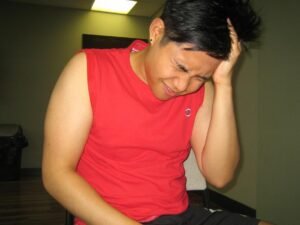Orthostatic hypotension is an abrupt drop in the blood pressure that occurs when an individual stands up quickly. The blood pressure is the force of blood against the walls of the arteries. When an individual stands up, the gravity pulls the blood into the legs and the blood pressure starts to drop. There are also medications that can affect the normal reflexes that eventually result to orthostatic hypotension. These reactions start to weaken as one ages; this is why it is quite common among the elderly.
Causes of orthostatic hypotension
- Dehydration
- Drop in the blood volume due to certain medications
- Anemia
- Pregnancy
- Old age
- Heart conditions
- Parkinson’s disease
- Diabetes
- Very hot weather
- Long-term immobility or bed rest
- Consumption of alcohol together with blood pressure medications
Symptoms of orthostatic hypotension

The common symptoms include lightheadedness and dizziness when standing up. The symptoms typically go away when sitting or lying down. Other symptoms include:
- Palpitations
- Nausea
- Headache
- Confusion
- Weakness
- Blurred vision
This can commonly occur among the elderly individuals which can increase their risk for falls. Due to this, it is important to stand up from a chair or bed at a steady pace instead of rising up too quickly.
How orthostatic hypotension is diagnosed
In case orthostatic hypotension is suspected, your doctor will check your blood pressure while standing, sitting or lying down. The condition is diagnosed if the systolic blood pressure falls to 20 mmHg or the diastolic blood pressure drops to 10 mmHg within 3 minutes of standing up.
A physical examination is performed and the heart rate is checked. Other tests are also requested to determine the underlying cause. The tests include CBC, echocardiogram, EKG, stress test or the tilt table test.
Treatment for orthostatic hypotension
The basic first aid treatment for orthostatic hypotension typically depends on what causes it. It can include these modifications in the lifestyle.
- Individuals who are dehydrated must be instructed to increase their fluid consumption and cut down the intake of alcohol
- Instruct individual to stand up slowly when getting out of bed or a chair
- Isometric exercises must be performed before getting out of bed to help increase the blood pressure
- If the condition is caused by medications, it is best to consult your doctor to adjust the dose or switch to a different medication
- Compression stockings must be used to help facilitate better circulation in the legs
- Avoid crossing the legs or standing for extended periods of time
- During hot weather, especially summer, try to avoid going out for walks
- When sleeping, the head of the bed must be slightly elevated
For severe cases, the doctor can prescribe medications that will increase the blood volume or constrict the blood vessels in order to treat orthostatic hypotension. It includes fludrocortisone which is the first-line therapy for the condition. Others include erythropoietin, midodrine and pyridostigmine.
